James Marion, who took part in the FTR Chichibu & Okubuzo 100K, has written a report on the event.2023.12.07
Following on from the ‘2023 FTR Minano’, he has again written a detailed account of his participation in the event. Please take the time to read it.
James Mallion Profile
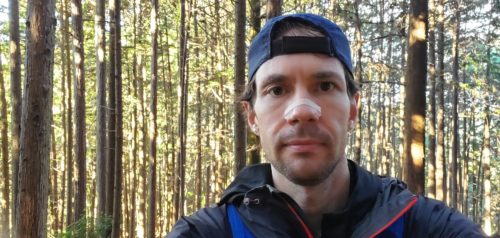
Coming from Canada, James has always been interested in the outdoors, mountains, skiing and climbing but his passion for running really took off as the pandemic forced people to stay at home.
Now, as normalcy starts to creep back into the world and organized races are a thing again, James seeks to challenge his mind and body on the roads, mountains and trails.
James is also a big movie buff, he hosts a podcast interviewing creatives on inspirations, he’s a music lover, a sports fan of both team and endurance sports and a bit of a craft beer aficionado.
Look to James for the perfect long run playlists or the best brew recommendation after you finish your next marathon or trail race.
podcast
https://www.adsrcollective.com/podcast
The 9th Edition of the FunTrails Round Chichibu and Oku-Musashi
(Pushing Limits in the Rugged Mountains of Chichibu)


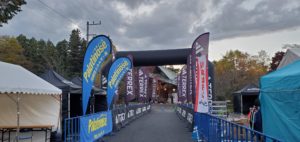

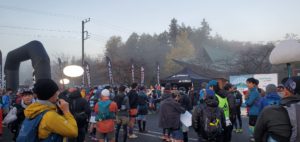
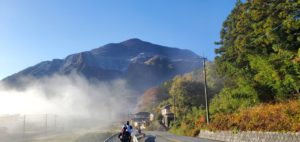


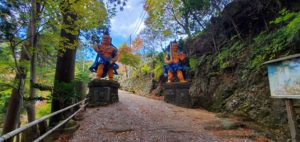
Before delving into the intricacies of the 9th annual Fun Trails Round Chichibu & Oku-Musashi 105km mountain trail race let me provide a glimpse into my background and the journey that led me to the starting line of this challenging event. (Feel free to skip this section if you’re eager to dive into the race report.)
My affinity for writing has always been a constant in my life even before I moved here to Japan some 13 years ago. More recently however, let’s say the past 3 years or so, a fervor for running has also taken root. Combining these passions seemed like a logical step for me. After venturing into the realm of running races here in Japan, I began documenting my experiences in competitions, predominantly those of the mountain and trail running variety. This past race in Chichibu marks my ninth race in Japan and my fifth in 2023.
While I’ve previously taken part in ultra-distance races in the past (any race longer than the traditional marathon length of 42.195 kilometers), FTR Chichibu and Oku-Musashi proved to be my most demanding race to date. Covering a distance of 105 kilometers, navigating elevation changes totaling around 6800 meters, and enduring just under 25 hours on my feet, this race pushed the boundaries of my mental and physical endurance.
Notably, it was my second participation in an event organized by FunTrails, the first being the 2nd annual FunTrails Round Minano held six months prior in May 2023, where I tackled their 30km course. Having been thoroughly impressed by FunTrails during my participation in the earlier event, I eagerly anticipated the opportunity to join another one of their races in the future. For those intrigued, I invite you to peruse my report on that race, where I share my reflections on FunTrails and offer additional background information about myself.
Without delving too deeply into what I’ve previously detailed in that report, FunTrails, as an organization, has been at the forefront of producing and organizing predominantly trail and mountain races, primarily in the Kanto and Kansai regions since its inception in 2015. Spearheaded by Saitama native and accomplished trail runner Shunsuke Okunomiya, the company took its inaugural steps with the FTR Chichibu & Oku-Musashi race, now celebrating its 9th year. This race served as the catalyst for FunTrails, persisting as its flagship event, even as the company continues to broaden its horizons.
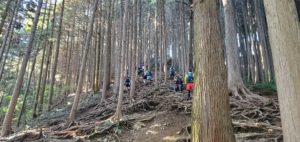 Quick Facts
Quick Facts
What: 9th FunTrails Round Chichibu & Oku-Musashi Trail Race
When: November 18th (Saturday), 2023
Where: Chichibu City, Saitama
Who: Over 1500 entrants; (761 in the 105km (completion rate: 67.99%), 745 in the 30km (completion rate: 98.45%))
Last Edition: November 19th, 2022 (8th FTR Chichibu & Oku-Musashi Trail Race)
The 2023 FTR Chichibu and Oku-Musashi (edition 7, 8 or 9?)
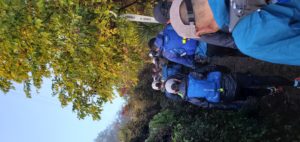
Prior to entering any race, I make it a practice to thoroughly research the event. In delving into the details of this race, examining its course and historical progression, I discovered that 2023 signified the race’s 9th year, the 8th occurrence, and the 7th iteration of the 105km course being undertaken.
Let me provide some context. From 2015 to 2018, the race featured two divisions. The primary offering was the FTR 100, a 105km loop course, similar to today’s, with an elevation gain/loss of around 6000 m. The inaugural course commenced and concluded at Hitsujiyama Park in Chichibu, Saitama, a tradition that persists to this day.
In these early years, the race also included a 50km course, featuring approximately 3300m elevation gain/loss, known as the FT Two Lakes and Green Line. This course, a point-to-point race, initiated in Hanno City Central Park to the southeast and culminated in Chichibu, also at Hitsujiyama Park.
From 2015 to 2018, the race adhered to this format, proving notably successful in drawing some of the country’s top trail and mountain runners. However, in 2019, a year marked by a few planned alterations, the race underwent some changes.
In 2019 the 50km point-to-point course was discontinued, making way for a more novice-friendly alternative—a 25km loop course known as the FTR 25, boasting an elevation gain/loss of approximately 1500m. Simultaneously, the full 105km course was to be continued as planned for that year.
Regrettably, the 2019 plans faced an unforeseen obstacle. The aftermath of a late-season typhoon inflicted substantial damage to the course, resulting in the unfortunate cancellation of the 5th edition of the race, leaving no event held in 2019.
Subsequently, in 2020, the emergence of the Covid-19 pandemic led to the postponement and cancellation of races worldwide. FTR Chichibu & Oku-Musashi was not immune to these challenges. The 105km race slated for 2020 had to be canceled. However, owing to the concerted efforts of everyone involved, the FTR 25, initially planned for the previous year, managed to proceed in 2020. The race adapted with minimal aid station contact and distinct wave starts, ensuring the event could persist despite the challenging circumstances of the year.
In 2021, with the gradual return of normalcy, the race resumed its usual dual-distance format. It featured the signature 105km distance and introduced a new 30km distance. Notably, both long and short courses underwent significant modifications from previous years, emphasizing as FunTrails put it, “enhanced safety and an elevated level of enjoyment for participants.”
From the 7th edition of the event to the current 9th edition in 2023, FTR Chichibu & Oku-Musashi stands steadfast with its comprehensive offerings—a challenging 105 km loop course and a more approachable 30km loop. Both divisions attract a diverse array of runners from across the country, encompassing all ages and skill levels.
Presenting these two courses seamlessly aligns with the ethos embodied in the company’s name, FunTrails. The company emphasizes conveying the enjoyment and allure of trail running to a broad audience. The 30 km distance, although certainly challenging, features a manageable elevation gain/loss of around 1400m and generously grants entrants a 7-hour time limit. On the other hand, the 105km course poses a more formidable challenge with approximately 6800m of elevation gain/loss, coupled with a time cutoff of 31 hours.
The impressive finish rates, notably exceeding 98% in the 30km event, resonate with the sentiment expressed in the FTR Chichibu & Oku-Musashi logo. The English text within the logo explicitly declares, “Not only athletes, Everyone can enjoy!”—emphasizing the event’s inclusive spirit.
The Road to Chichibu
Reflecting on my completion of this event, I’ve been asked about the training and preparation required for such challenging races—trail and mountain ultramarathons that can span an entire day and night. To those who haven’t attempted such a feat, it can appear incredibly daunting. While I’m no seasoned expert, having only just tackled my second ultramarathon over the 50 mile distance, I can share what has worked for me.
Experience, particularly in similar races, even at shorter distances, plays a crucial role. Trail and mountain running often demands a knack for troubleshooting, problem-solving, and figuring out how to persistently put one foot in front of the other. It requires overcoming numerous highs and lows, both literally and figuratively. Spending extended periods on your feet in the mountains—running, hiking, eating, and drinking throughout—serves as valuable practice, even if it doesn’t perfectly replicate the race experience.
However, physical preparation is just one facet; mental preparedness is equally, if not more, vital. I’ll delve deeper into this aspect as I recount my race experience.
Understanding the physical aspect of preparation seems more straightforward, so I’ll begin there. Again, keep in mind I’m no expert, I’m just sharing my views. When it comes to physical readiness, it makes logical sense to tailor your training to the specific demands of the event. In the months leading up to the race, the initial focus should be on building general fitness, followed by targeted training that mirrors the expected activities during the race—whether it involves running, hiking, climbing, walking, scrambling, or more.
For the FTR Chichibu, this means most likely progressively increasing your weekly running mileage, and then incorporating climbing and hiking in mountainous terrain, and ideally, familiarizing yourself with the actual race course. Practicing specific segments on the course contributes significantly to reaching your race goals, whether that’s aiming for the podium or simply completing the race within the 31-hour cutoff time.
In my case, juggling a busy work schedule and family commitments often makes it challenging to train in mountainous environments. Additionally, I didn’t have the opportunity to run segments of the course before the race. If you find yourself in a similar situation, I’m here to encourage you not to let these factors deter you. Follow your heart; choose a race that ignites a spark within you—a race that excites, scares, and inspires you, much like FTR Chichibu did for me.
It’s crucial to adapt your training to the best of your ability and understand that no training or plan will ever be flawless, whether you’re crafting it independently or with the guidance of a world-class coach. Recognizing that the majority of us aren’t professional athletes, FunTrails acknowledges this reality. They set cutoff times and design courses to be challenging yet attainable for the majority of participants, acknowledging the diverse backgrounds and levels of experience within the running community.
Join the Fun
For expats residing in Japan or even those visiting, participating in FTR Chichibu and Oku-Musashi race is a breeze. Typically, registering for races in Japan involves navigating pages entirely in Japanese, often on platforms like Sports Entry, Lumina, or Runnet. However, FTR Chichibu stood out in its registration process by offering an option to sign up through Runnet Global.
For those unfamiliar, the Japanese site Runnet also provides a global version of its site, allowing for English registrations for specific events. In my experience, this global platform is frequently used for high-profile trail races and international marathons in Japan, anticipating participants from around the world. FunTrails, in its bid to broaden its participant base internationally, strategically included registration on Runnet Global.
For those residing in Japan and accustomed to the process, using the Runnet Japan website is equally viable for joining the race.
Once enrolled, expect to receive periodic emails from FunTrails covering various aspects of the race, including essential equipment, registration times, parking options, hotel reservations, and more. It’s also beneficial to stay updated through the race’s website and Facebook page, both rich sources of information.
Speaking of which, a particularly valuable resource I discovered on the FTR Chichibu & Oku-Musashi Facebook page, which I’ll elaborate on during my race recap, was a course and strategy guide posted by a previous race winner, Yuichi Hosoyama. In this guide, he meticulously breaks down the course section by section, aid station to aid station, ranking each segment in terms of difficulty and offering tips or considerations for each. Given my inability to scout the course beforehand, I found this guide remarkably helpful and kept its insights in mind throughout the race. While the guide was in Japanese, with the assistance of translators and my own understanding, I managed to decipher most of it.
The Day Before (Checkin’ In)
With the FTR Chichibu 105km division set to kick off at 7 am on Saturday, November 18th, and the 30k course commencing at 10 am, the check-in process was a crucial prelude. For those tackling the 105km race, check-in and reception unfolded the day before, on Friday, November 17th, from 1 pm to 6 pm. Meanwhile, participants in the 30k race had the option to check in on the 18th, the morning of their race, between 7:30 am and 9:30 am.
I must highlight the well-organized reception and check-in area, designed for easy navigation. The layout incorporated multiple booths, featuring food stalls and event sponsors such as Adidas, Garmin, New-Hale, Petzl, Medalist, Ripovitan, and more. This not only streamlined the check-in process but also provided a convenient opportunity to explore additional gear options or stock up on gels, snacks, and supplies right on site.
Embrace a Night’s Stay
For those of us who reside outside the Chichibu area, the mandatory day-before registration and early race start necessitated booking accommodation at an inn or hotel. This allowed me to seamlessly complete check-in on Friday, preparing for an early Saturday morning. By 6 am, I was at the race venue, dropping off bags and gearing up for the 7 am start.
In my situation, despite the official race announcement in June and registration opening in early July, my commitment to the 105km division solidified only around September. By then, most local hotels were fully booked. Thankfully, persistence paid off, and I secured a room at the ‘Comfort Stay Miyabi,’ a delightful business hotel within walking distance of the race venue. Reflecting on this, I’d advise future participants to act promptly in reserving accommodations to avoid last-minute stress. While organizers offer assistance in securing rooms through a form (albeit entirely in Japanese), opting for independent reservation proved to be a smoother process in my case.
Gear up and go
The mandatory gear list for both the 30k and 105km divisions in this race may seem extensive, but in my view necessary. When you anticipate navigating the mountains continuously for 20 to 30 hours, day and night, preparedness becomes paramount. The required gear, checked during Friday afternoon’s reception, included essentials such as a first aid kit, rainwear (both jacket and pants), two sets of headlamps with spare batteries, a long-sleeved shirt, tights, gloves, a winter hat, a portable disposable toilet, an emergency blanket, and more.
Certainly, having a running pack or bag was also essential to carry all this gear, not to mention provisions like food, snacks, water, and other necessities required for traversing the mountains between aid stations (there were 9 in total for the 105km course and 2 for the 30k). The comprehensive gear list was a testament to the organizers’ commitment to the safety and well-being of all participants, ensuring everyone was adequately equipped for the challenges that lay ahead.
Navigating the Drop Zone (or my first drop-bag experience)
While some readers may be familiar with using drop bags and know precisely what they want and need in their bags, for others like myself, less acquainted with the process, let me break it down.
A drop bag is a personal container that a participant prepares and leaves at a designated aid station along the course. Packed with items the runner may need during the race but doesn’t want to carry for the entire distance, it also allows for discarding unnecessary items. This concept permits runners to tailor their supplies to the challenges of different course sections.
This was my inaugural race allowing the use of drop bags, a feature typically seen in Japan at trail races around 80km and longer. While it’s up to the organizers whether to allow drop bags, there are no rigid rules. Some races even offer the option of multiple drop bags, usually in races of 100 miles or more. At FTR Chichibu, drop bags were an option for the 105km division, distributed upon registration on Friday. We filled them with chosen items and dropped them off at a booth on race morning, later transported to aid station 5, near the halfway point at 49km.
In my drop bag, I included a change of clothes, socks, extra batteries, more run-food, and snacks—particularly caffeinated drinks, snacks, and gels to power through the upcoming night. Although I felt I packed most of what I needed, I wasn’t as efficient at this aid station as I could have been. Spending around 45 minutes when 15 might have sufficed made me realize the importance of better organization. For future races, I plan to prepare my drop bag with sections and separate bags within for streamlined access.
Efficiency also suffered as I attempted to charge my watch and smartphone with a battery pack, a process that proved ineffective and left me sitting in the cold longer than necessary. Lesson learned: test gear and have a plan when you reach your bag.
Another revelation was the usefulness of a race bib belt, an item I saw many racers wearing and one I’ll make sure to pick up before my next race. Removing and reattaching the bib to my fresh shirt took time and effort, an inconvenience a belt could eliminate. Despite these challenges, having access to a bag midway through the race, changing into warmer clothes and socks, undoubtedly aided me in the latter half of the course. Like anything, the more practice with drop bags, the more efficient one becomes. While it’s challenging to simulate in training, live and learn remains my advice on this matter.
Conquering Chichibu: A Long Night on the Trails
Thanks for sticking around this far! Now, let’s dive into the heart of the matter—the race itself. As you might have gathered from the previous details, I did indeed cross the finish line, securing a place in the top 25% of participants and completing the course in just under 25 hours. So, how did I pull it off?
Spending over a day and night on the course was far from a smooth journey. Nevertheless, I surprised myself with how well I held up, particularly in the later stages of the race. My legs, body, and mind cooperated more effectively than I had anticipated.
As mentioned earlier, I had the advantage of a course guide weeks before the race, a valuable resource that I thoroughly studied alongside the course map and elevation profile. To maintain my mental composure, I broke down the course into 10 challenging sections, each leading from one aid station to the next. Each section had its own difficulty level, distance, and elevation, providing a mental roadmap that helped me navigate the course effectively. While I couldn’t memorize the entire course, this approach allowed me to always know which section I was on, its difficulty rating, and what challenges lay ahead in the subsequent sections.
Stay in the Now: A Mental Marathon
As I emphasized earlier, the mental fortitude required for ultra-distance races often surpasses the physical preparation. Having completed this formidable race, I can reaffirm the truth of this statement. Tackling over 100km through rugged mountains, marked by relentless climbs and descents, becomes an immensely daunting task, especially with minimal mountain training—my only warm-up being a 55 km mountain race in September.
The key to overcoming such challenges is to ward off doubt, resist the temptation to compare oneself to others, and avoid viewing the race as an insurmountable whole. Instead, it’s about breaking it down step by step, kilometer by kilometer, climb by climb, and aid station to aid station. Progress becomes evident when the focus shifts to the immediate, allowing for a gradual journey forward.
For me, participating in trail and ultra races isn’t about competition with others; it’s a personal challenge—a test against both myself and the course. It’s about finding joy in the journey, relishing the experience, and expressing gratitude for the opportunity to partake in such remarkable endeavors in beautiful locations.
Memorable Moments: A Journey of 105 km
Reflecting on the 105 km and nearly 25 hours of racing, numerous moments stand out.
Let’s start at the beginning. Given the sizable field, the race commenced in three starting blocks—A, B, and C—based on participants’ projected finish times. I found myself in block B. The initial stretch from Hitsujiyama Park to the first aid station, while one of the easier sections with a mix of road and trail, involved minimal climbing. Despite personally planning to take it slow to begin with, the narrow trails and the congestion of runners dictated an unexpectedly gradual pace. Nonetheless, with the day just beginning, spirits were high, and I anticipated plenty of time to pick up the pace later in the race.
Exiting the first aid station marked the initiation of what felt like the real race. The terrain became more challenging, incorporating more trails and a significant climb of over 650m across 11 km. While not the toughest section, it signaled the intensification of the challenge.
Progressing through the first half of the course, I adhered to my strategy of walking uphills and running the flats and downhills. As the day transitioned into night, a notable challenge of November racing became apparent—the limited daylight, approximately 10 hours compared to the 15 hours in the summer months. The bulk of the race, including the most demanding sections, had to be navigated in the dark.
Entering section five out of ten, a stretch from aid station four to five, and toward my drop bag, I knew this segment was one of the most demanding. Spanning about 14 km, it featured substantial climbing and descending on technical terrain. It’s essential to clarify that the course’s terrain is rugged, rocky, rooty, and highly technical—far from the smooth ski trails one might envision when you think of mountain trail races.
By this point, I had made considerable progress, maintaining my goal of consuming around 200 calories per hour, nourishing myself with real food at aid stations, and keeping my pace consistent. Racing against the sunset, my objective was to reach my drop bag and aid station 5 before darkness enveloped the course. Despite my efforts, the sun conceded to the horizon, and with deteriorating visibility, I reluctantly retrieved my headlamp, embracing the reality of navigating rocky descents in the dark.
After a challenging hour of navigating the darkened trails, I reached aid station 5, greeted by my drop bag and an opportunity to regroup. As the sun fully set, and I lingered for around 45 minutes, a growing chill settled in, making it increasingly challenging to muster the resolve to resume the race in complete darkness.
Ah those FunTrails aid stations!
Stepping aside briefly from the details of the race narrative, let’s pause to delve into the pivotal role of aid stations in the realm of ultra trail races. With a specific focus on what left a lasting impression on me during the FTR Chichibu & Oku-Musashi event.
As noted earlier, the 105km course was punctuated by nine aid stations, each marking a vital checkpoint for runners to check in and (hopefully) subsequently out to progress in the race. What notably impressed me, consistent with my previous FunTrails race experience, was the exceptional quality of these aid stations—both in terms of quantity and the offerings available.
In comparison to some North American races where aid stations might feature typical fare like chips, snacks, sandwiches, and sports drinks, the FunTrails aid stations went above and beyond. They not only offered an abundance of choices but also focused on providing nourishing, healthy options to sustain runners through the day and night. Some examples of the diverse offerings included rice balls, corn soup, sandwiches, oinari, rice beef bowls, dumpling soup, Japanese rice cakes, oden, daifuku, manju, tonjiru, dorayaki, pickled plums, bananas, tangerines, rice crackers, in addition to water, salt tablets, and a selection of sports drinks.
It wouldn’t be an exaggeration to say that one could almost rely entirely on the aid station offerings to stay well-fed and energized throughout the race. While the aid stations were occasionally bustling, I made a point to not only consume food on site, but also grab extra items to stash in my pockets for the stretches between aid stations.
Allow me to leave you with a final reflection on aid stations and a piece of advice that I aim to carry forward in my future races. Having a well-thought-out plan for each aid station can be crucial. Don’t linger without purpose—remember, you are here to race, and time spent at aid station can accumulate quickly. Suppose, for instance, you plan to spend 10 minutes at each of the nine aid stations on the course. That alone adds 90 minutes to your overall race time. Factor in additional time at your drop bag, potential extended stops due to unforeseen issues, and suddenly, those 10-minute intervals can accumulate to over 2 hours or more. These two hours could be the difference between reaching a time goal or not, or even finishing within the cutoff time or not.
Before you embark on your race, familiarize yourself with the offerings at each aid station, formulate a rough plan for your actions at each checkpoint, and approach each station with purpose. Avoid unnecessary delays unless you have a specific issue to address. Efficiency at aid stations can make a significant impact on your overall race performance.
Navigating the Night (This is where things get real!)
As I ventured beyond the 5th aid station, the clock approached 6 pm, and the chilling temperatures edged close to zero degrees Celsius. The real challenges lay ahead. Having collectively traversed around 50 km at this juncture, equivalent to roughly 10 hours on my feet, it was indeed a noteworthy accomplishment. Nevertheless, every participant in the 105km division had confronted comparable distances before, as the mandatory requirement for joining the FTR Chichibu 105k was the completion of two or more trail races over 50 km or a single race exceeding 100 km.
Before I delve further, I want to highlight another positive aspect of participating in a FunTrails race—the impeccable course markings and the abundance of staff deployed throughout the race. Given that this event unfolded predominantly in the dark, navigating steep, technical, and infrequently traveled trails, the potential for runners to lose their way was a real concern. However, the likelihood of this happening was significantly mitigated for a couple of reasons.
Firstly, the course markers and flags were meticulously placed and thoughtfully designed. They were not only visible but also equipped with reflective elements. At every trail turn, participants encountered arrow signs accompanied by two or three course flags, providing clear guidance. On roads or at major directional changes, flashing red lights were strategically positioned, ensuring participants knew the correct route to follow.
Secondly, a considerable number of course marshals and staff members were stationed at crucial junctures and actively patrolled the course. Their presence served a dual purpose: guiding runners at key points and traversing the course to check on the well-being of all participants. Despite running alone for extended periods while feeling fatigued and drowsy, I consistently felt assured that I was on the right path, thanks to the well-executed course markings and the vigilant race personnel.
The ensuing 12 hours or so unfolded in darkness and cold, weaving through the most demanding mountain ranges and climbs, creating a natural division and separation among the participants. Sections 7 and 8, spanning from kilometer 59 to kilometer 83, led us through the Hanno Alps, presenting an unrelenting series of ascents and descents. Here, and throughout the night, a crucial strategy for me was maintaining ample caffeine intake and approaching descents with added caution.
While daylight allowed me to tackle downhills with vigor, navigating technical, steep, rocky descents in the pitch-black night demanded a more careful approach. This need became strikingly evident in section 7 when, negotiating yet another steep descent, both of my feet snagged on a root, resulting in a harsh fall that left my shins and knees with cuts. As I got up, I assessed the pain, realizing it was manageable but served as a stark reminder that one misstep could jeopardize the entire race. With over 16 or 17 hours invested at this point, I couldn’t afford to let another mishap derail my progress, prompting me to adopt an extra cautious stride.
Surprisingly, as the miles steadily passed, my legs held up remarkably well. Minor cramping around the 30 km mark was the sole instance throughout the entire race. Whether due to a specific factor or a combination of several, the continuous intake of amino acids, BCAA drinks, and caffeine appeared to contribute. Even in the later stages of the event, I found myself climbing proficiently, occasionally overtaking other runners, only to be passed again on the descents as I opted for a prudent descent strategy.
The stretch from aid station 8 to number 9 marked our final extended climb, a last boss of sorts on the course. Despite covering only about 10 km, this section presented a challenging elevation profile of approximately 740 m climbing to 242 m descending.
So Close You Can Taste It
Navigating through the most challenging sections, I stumbled into the final aid station, wearied and slightly disoriented. Despite the toll the race had taken, I found a reserve of energy to propel me forward. A few pieces of bread and a small bowl of soup later, I pressed on.
But Taste What?
Before delving into the concluding segment of my race, let’s explore what fueled me through the countless kilometers and hours on the course. I previously mentioned my rough goal of consuming around 200 calories per hour during the race. Undertaking endurance events of this magnitude demands an immense expenditure of energy, burning through thousands of calories. While replacing every lost calorie might be a near-impossible feat, I aimed to do my best.
Recognizing the need to sustain myself, I grappled with the challenge of eating consistently while traversing mountains for over 24 hours. I consider this one of the significant hurdles in trail ultramarathons. Although I didn’t achieve perfection in this aspect, I believe I fared quite well.
Previously I highlighted the array of delectable offerings at the aid stations, which no doubt constitute a crucial aspect of race nutrition. However, the vast stretches between aid stations necessitate additional sustenance. My success in fueling for this race was rooted in the sheer quantity and variety of “run food,” “real food,” and snacks I brought to Chichibu.
Despite the occasional inconvenience of lugging around a plethora of snacks, gels, powders, and candies in my pack and pockets, I believe this made a significant difference in helping me complete the race with relatively few gastrointestinal issues. (This, unfortunately, wasn’t the case for some fellow participants I spotted grappling with stomach problems on the course.)
For those curious about my go-to items that kept me fueled and moving, here’s a glimpse: Belgian waffles, GU Energy Stroopwafels, energy bars, cereal bars, cereal bites, Enemoti nutrition bars, yokan bars, pretzels, chocolate-covered coffee beans, caffeinated gummy candies, salted caramels, honey ginger candy, BCAA drink mixes, Tailwind drink mix, and more.
The strategic variety in the items I packed played a pivotal role. When the taste of one item became monotonous, the ability to seamlessly transition to another became paramount. Palate fatigue is a real phenomenon in endurance events, and maintaining the flexibility to ingest diverse foods proved crucial in navigating the challenging course and consistently racking up the miles. The ever-changing flavors not only offered physical nourishment but also served as a mental boost, helping me sustain momentum in the face of a grueling race.
Everybody loves the Sunshine
Emerging from the aura of the final aid station, the realization hit me— the finish line was within reach, but I couldn’t afford to lose focus. The last leg of the race held a series of daunting climbs. Scaling rocky surfaces and navigating along cliff faces, I could taste the proximity of the end, yet the final challenges demanded my utmost attention.
The approaching morning light brought a mix of relief and an intensified awareness of the night perils that lingered. The wind, now gaining strength, prompted me to tighten the hood of my jacket, bracing for the last atmospheric challenge. With determination burning brighter than the emerging daylight, I pressed on, each step propelling me closer to the culmination of a journey through the Chichibu mountains.
Navigating the final stretches of the mountainous course, a subtle shift occurred as the darkness relinquished its grip. The first light of a new day began to weave its way through, signaling the emotional peak of the race. Perched atop the mountains, with approximately 90km etched into the journey, I witnessed the sun timidly cresting the horizon.
The scene was poignant—Chichibu’s cityscape unfolding beneath, awakening to a tranquil Sunday morning. A whirlwind of emotions swept over me, contemplating the surreal contrast between the peaceful city below and the enduring spirit of the few hundred participants persisting in a race now deep into its 23rd hour. Despite the temptation to pull out my smartphone and capture the moment with a snapshot, the persistent howl of the wind dissuaded me. This was a moment to savor, an internal memory woven into the fabric of the race, transcending the need for technological documentation.
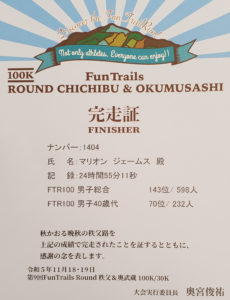 A little more left in the tank (but how much exactly?)
A little more left in the tank (but how much exactly?)
In the concluding kilometers, the course gracefully descended, offering predominantly downhill and runnable terrain for those who still possessed the strength to seize it. With the dawn of a new day, a surge of revitalized energy coursed through my veins. Despite the previous hours of cautious descent, the newfound light unveiled the intricate network of roots, rocks, dips, and turns that had challenged me in the darkness. Recognizing that my reserves were dwindling, I decided this was the opportune moment to push my limits and relish the joy of speeding down the trails.
I embraced the sensation of sprinting and soaring through the trails, as if the race had just commenced. Every minute of this exhilarating descent was savored, until the course transitioned back to the final road sections.
Fully aware that I was burning through my remaining reserves at an accelerated pace, I couldn’t resist. The sun illuminated the path, signaling the culmination of a profound journey. Catching up with another runner, I matched his pace on the roads, pushing myself to maintain the rhythm. However, as we reentered the trails for the last couple of kilometers, an uphill stretch confronted me. My legs, taxed by the demanding pace, conceded to a shift in strategy, necessitating a transition to walking and power hiking through the brief trail section.
The last 500 meters or so retraced our steps on roads leading back to the starting point at Hitsujiyama Park. I shifted seamlessly from a jog to a run, culminating in an all-out sprint as the finish line beckoned. Drawing inspiration from the legendary ultra racer Zach Miller, I soared through the finish—picture Miller’s signature intensity for those familiar with his style.
The clock steadily approached 8 am on Sunday morning, marking the culmination of 25 hours since setting out from this very point. Despite feeling a bit dazed, confused, tired, and hungry, an overwhelming sense of contentment, satisfaction, and awe embraced me. Witnessing the firsthand resilience of the human body, I marveled at the unwavering belief that propels individuals forward in the face of challenges as demanding as this race.
Reflecting on a Year of Trail Adventures
As the final curtain descends on the racing season, FTR Chichibu & Oku-Musashi marks the concluding chapter for me in the world of trail running this year. Despite trail races extending into mid-December in Japan, this event serves as my finale for the season. The past year has been a satisfying journey of racing and self-discovery amidst the mountains and trails. Japan offers a myriad of options for trail enthusiasts, and having conquered challenges as formidable as this race, I look forward to exploring more trails in the future.
For now, I choose to revel in the present, relishing the joy of not having a race looming on my calendar. While the cold is not my preferred racing condition, FTR Chichibu & Oku-Musashi provided an exceptional experience that transcended mere running. I encourage anyone seeking a test of endurance in Saitama’s rugged mountains to consider this race. It’s events like these that deepen my appreciation for trail running, as it encompasses more than just running. It involves hiking, climbing, scrambling, walking—a multifaceted journey through the captivating landscapes of historic towns, temples, shrines, forests, and mountains. The race serves not only as a pathway to Chichibu and Oku-Musashi but also as a portal to self-discovery in realms rarely explored.

